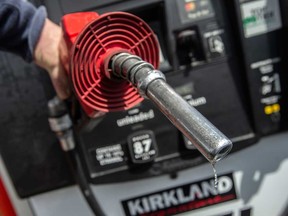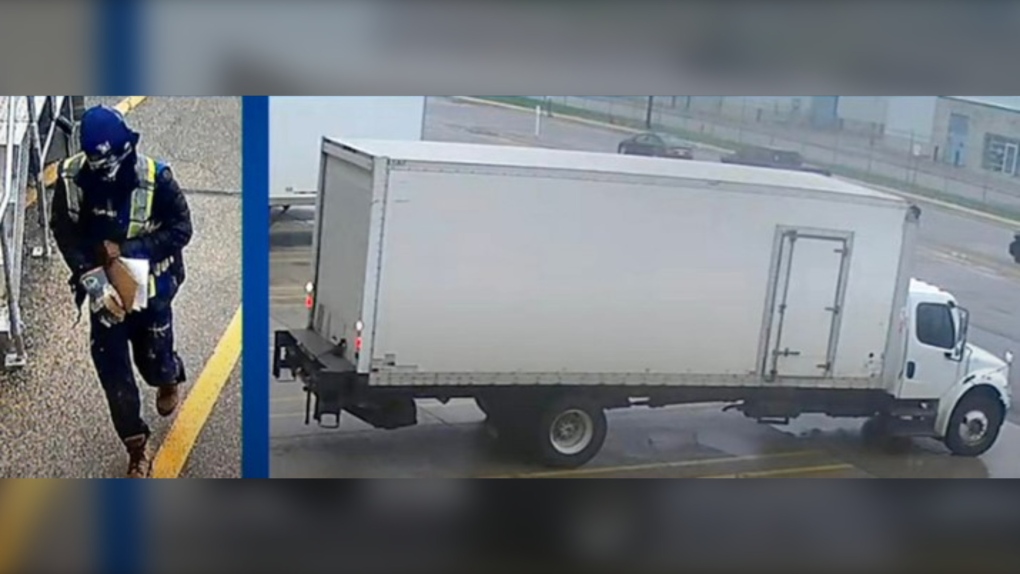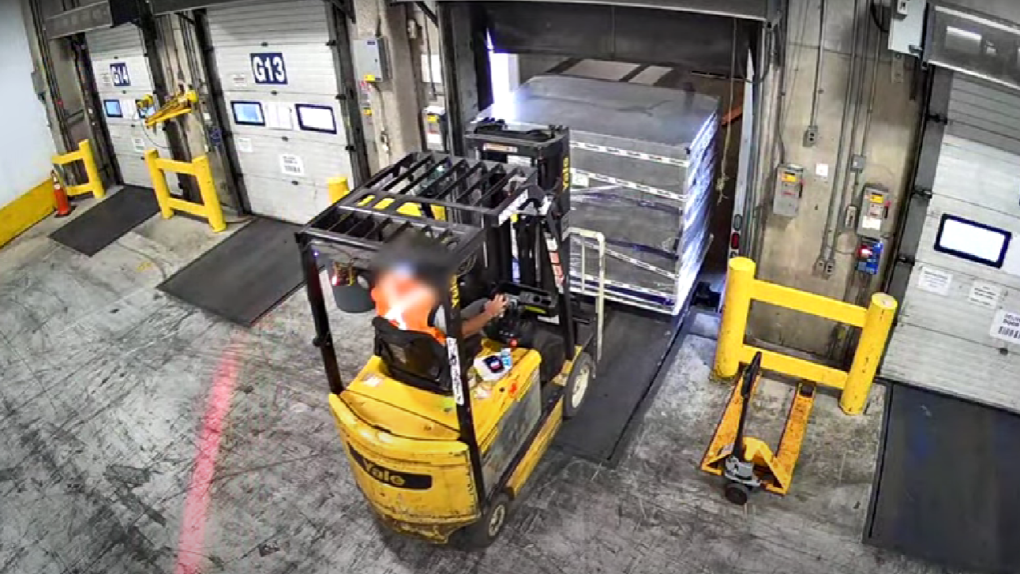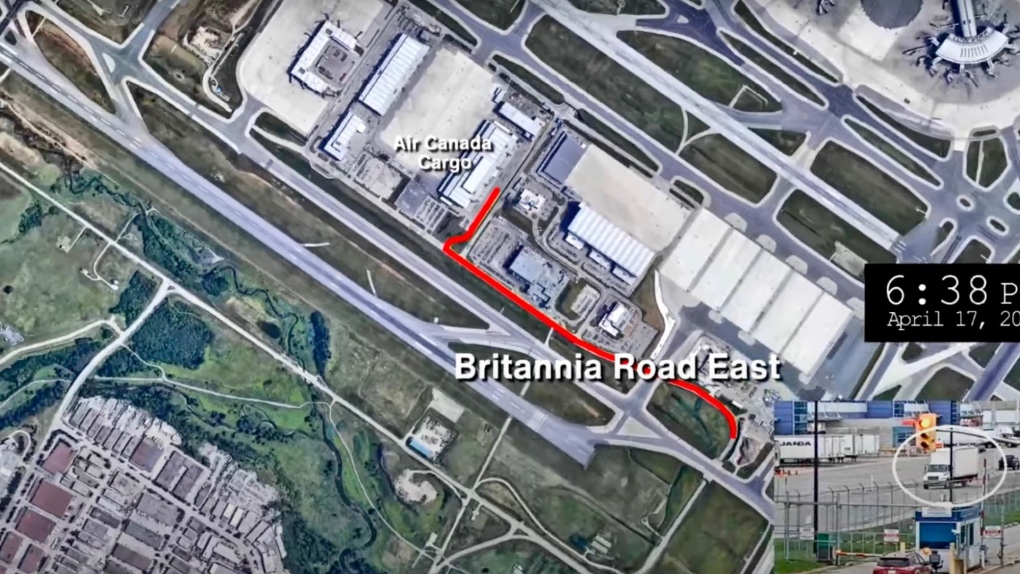Article content
There’s a price shocker coming at the pumps.
|
|
(Bloomberg) — On Christmas Eve, Carlos Ghosn walked into his lawyers’ modest office in central Tokyo to speak to his wife, Carole, for only the second time since April. During his long odyssey through the Japanese legal system—several arrests, more than 100 days in solitary confinement, seemingly endless interrogations, and, after his release on bail, intrusive 24-hour surveillance—Ghosn had been forced to accept many humiliations. But few demoralized the ousted leader of Nissan Motor Co. and Renault SA as much as having to seek court permission even to call his spouse, who prosecutors viewed as a potential co-conspirator in some of the wide range of financial crimes with which he’s been charged.
Carole, who’d departed Japan in a hurry after her husband was taken into custody on a fourth charge in early April, has spent much of the last year lobbying tirelessly on his behalf—a campaign that was taking an obvious toll. “They’ve destroyed our lives, we are scarred forever,” she said of Ghosn’s accusers in a November interview with Bloomberg Television. “It’s been the hardest year of my life.” They were allowed to speak for one hour, but it wasn’t enough; they still had much more to say to each other. As time ran out, according to one of Ghosn’s lawyers, who described the call on his blog, the fallen executive signed off with a simple “I love you, habibi,” an Arabic term of affection.
It seemed impossible to know when the couple would next have a chance to speak, let alone embrace. The following day, the 65-year-old Ghosn learned that the second of his two trials might begin only in 2021, raising the prospect of another year or more in court-imposed isolation. Even his children were being targeted by investigators. Japanese prosecutors had questioned Ghosn’s son Anthony, who was involved in some of the transactions they were targeting, as well as one of his daughters, according to a person familiar with the matter. Fearing arrest, Anthony had been unable to visit his father.
Ghosn’s prospects of proving his innocence in Japan were dismal. Prosecutors there win more than 99 percent of the cases they try and enjoy a wide range of procedural advantages. Against Ghosn, who was facing potential sentences of more than a decade in prison, they had an even greater-than-usual asset: the full co-operation of Nissan, which had repeatedly made clear its determination to see him convicted and had provided a huge trove of documents as well as hands-on investigative assistance. Ghosn, a citizen of Brazil, France, and Lebanon, had sought diplomatic help from all three countries. Only the last had acted with evident enthusiasm, but its efforts weren’t getting anywhere.
Ghosn, however, had another option—a desperate play, months in the planning, that might restore some portion of his freedom if everything went right, or send him straight back to a 7-square-meter (75-square-foot) cell in Tokyo’s central jail if any aspect went awry. In the Middle East, a former U.S. Army Green Beret and a veteran of the 2003 invasion of Iraq were preparing a daring plan to spirit Ghosn out of Tokyo, under the noses of Japanese police. They aimed to bring him back to Beirut—the city where he had spent most of his childhood, and the capital of a country where, thanks to his business success, Ghosn is considered something of a national hero.
On its face, it must have seemed like a ridiculous idea. While the terms of Ghosn’s bail did not include a requirement to wear an ankle bracelet or other electronic tracker, his movements were closely monitored. Prosecutors had trained a camera on the door of his rented house, in Tokyo’s busy Roppongi neighborhood, and as he moved through the Japanese capital he was shadowed by teams of plainclothes agents. Ghosn, who has bushy eyebrows, elongated ears and prominent sideburns, would have a memorable face even as a regular citizen, but two decades of corporate celebrity meant that he was perhaps the most recognizable foreigner in Japan. His chances of slipping undetected through Tokyo and onto an airplane would have seemed slim, to put it mildly.
Yet there was a clear window of opportunity. New Year’s is typically the longest holiday of the year in Japan, a time when government offices can close for more than a week and even the most hard-boiled prosecutors and police detectives take time off to be with their families. Moreover, Ghosn had good reason to believe he could evade at least some of the men monitoring his movements: his lawyers had recently threatened to file a complaint against a private security company hired by Nissan to follow him, claiming it was infringing illegally on his rights. According to a person familiar with the situation, the company’s agents had backed off as a result—at least temporarily. (Nissan declined to comment.) If Ghosn was going to escape, this was the moment to do it. But he needed the right help.
In the shadowy world of private-security contractors, Michael Taylor was a swashbuckler who stood out. He protected powerful people and companies, secretly helped the U.S. government investigate crimes, and admitted breaking the law himself. A veteran of the U.S. Army’s elite Special Forces—the famed Green Berets—Taylor in 1994 founded American International Security Corp., a Boston-area contractor that provided security for oil drilling operations and corporate executives, and rescued abducted children among other assignments. He was hired by The New York Times to mount a rescue of David Rohde, a correspondent who’d been kidnapped in 2008 in Afghanistan. (Rohde ultimately escaped on his own). He also worked as an undercover asset for the Federal Bureau of Investigation, the Drug Enforcement Administration and other federal bodies.
Taylor’s career seemed to be prospering in 2007 when his firm secured a Pentagon contract, which eventually paid out $54 million, to train Afghan special-forces troops. But in 2012, his fortunes took a dramatic turn for the worse. He was charged in Utah with an FBI agent over a plot to obstruct a fraud investigation of whether the Afghan contract was awarded improperly. Taylor ultimately pleaded guilty to two fraud charges and was sentenced to two years in prison. It wasn’t his first guilty plea. In 1997, he admitted two misdemeanor charges in Massachusetts related to a police report filed in a domestic case in which he’d been hired, his lawyers said.
Much of Taylor’s work over the years had, improbably enough, involved Lebanon. Taylor was born on Staten Island and graduated high school in Massachusetts, but over the years he developed deep ties to Ghosn’s home country. He was deployed to Beirut during the Lebanese civil war, beginning what his lawyers said was “a lifelong relationship with the Christian community in Lebanon”—the same community of which Ghosn is a prominent member. Fit, square-jawed and with silver hair, Taylor speaks Arabic, his wife Lamia is Lebanese, and two of their three sons attended college in Lebanon.
For the Ghosn operation, Taylor had a partner, a Lebanese-born man named George-Antoine Zayek. Originally trained as a gemologist, his brother said by telephone, Zayek was also a member of a Christian militia when he met Taylor in the early 1980s, according to a person familiar with the matter, a time when Lebanon had fractured violently along sectarian lines. Zayek appears to have been associated with Taylor and his companies since the 1990s, based on public records in the U.S. According to his brother, however, Zayek left Lebanon at the start of the invasion of Iraq in 2003, when he began working for a private security company there. Taylor couldn’t be reached for comment and Zayek didn’t respond to multiple voicemail messages seeking comment.
On the morning of Sunday, Dec. 29, Taylor and Zayek arrived in a Bombardier Global Express Jet—a plane with a range of more than 11,000 kilometers (6,800 miles)—at the private-jet terminal of Kansai International Airport, a busy hub built on an artificial island near Osaka. There were also two large black cases on board, according to people familiar with the flight who asked not to be identified.
Later the same day, according to security-camera footage reported on by Japanese media, Ghosn walked out the front door of his house, wearing a hat and a surgical-style face mask commonly used in Japan to protect against germs. He then took a bullet train from Tokyo’s Shinagawa station to Osaka at about 4:30 p.m. local time and, after the journey, took a cab to a hotel near the airport, the network NTV reported. That evening the same Bombardier jet took off from Kansai bound for Istanbul. According to a person familiar with the investigation of the flight, the team believed that flying straight to Beirut, a city that receives few if any arrivals from Osaka, would raise too many suspicions.
Outbound passengers at the private terminal aren’t exempt from passport control, and according to people familiar with airport operations, there were customs and immigration officials present before the Bombardier’s departure. But Ghosn wasn’t boarding as an official passenger. He was, apparently, cargo, concealed in a large black case that, according to the people, was too big to fit into the airport’s X-ray machines. With nothing obviously amiss, by 11:10 p.m., the jet was in the air.
Reaching Istanbul’s Ataturk Airport would take just over 12 hours. The team ferrying Ghosn appeared to have chosen its route carefully. From Osaka the plane headed north-northwest, avoiding South Korea—which has an extradition treaty with Japan—and then crossing into Russian airspace, where it remained for almost its entire journey. That wasn’t the most direct route, which would have taken the jet over China, Mongolia, and Kazakhstan. But it did keep Ghosn over a country where he has considerable connections, thanks to his work rescuing AvtoVAZ, a troubled Soviet-era automaker that’s now part of the Renault-Nissan alliance. If the Japanese government demanded his plane be stopped, he might have hoped for sympathy, or at least stalling, from Moscow.
In fact, the Japanese authorities seemed to have no idea Ghosn was no longer in the country, and the Bombardier landed in Istanbul at around 5:30 a.m. local time on Dec. 30. Changing planes at Ataturk could expose Ghosn once again to detection. Just as at Kansai, according to a Turkish official who asked not to be identified discussing the details of the government’s subsequent investigation, Ghosn made the short trip inside a box. The second jet, a shorter-range Bombardier, took off shortly after for the brief flight to Beirut.
Safely on the ground in the country of his youth, Ghosn didn’t have to hide his identity. Although his lawyers had taken his travel documents as a condition of his bail, Ghosn had two French passports—a rare privilege, granted to citizens whose employment might require them to travel while also handing over a passport for visa applications. Ghosn had been able to keep the second one, under the condition that it remain in a plastic case secured by a combination lock for which only his lawyers had the code. According to a person familiar with it, the case wasn’t particularly sturdy, and with a hammer or drill and a bit of time it wouldn’t be difficult to crack open. His French passport in hand, Ghosn crossed into Lebanon legally.
Carole, who had been counting the days since the couple had last been together (just short of nine months) was in Beirut to see her family for Christmas when Ghosn landed. She rushed to meet him and kept him largely to herself until the couple met up with a few friends for a New Year’s Eve dinner. A photo showed them at a table sharing wine and Champagne. They looked, if only for a moment, like a normal couple with normal concerns.
Even Ghosn’s closest advisers were blindsided when news of his escape began to break on Dec. 31. His Japanese lawyers said they had no idea what he had planned; in an impromptu press conference outside his office, lead counsel Junichiro Hironaka seemed genuinely bewildered by what had just occurred, describing himself as “dumbfounded.” Ghosn’s U.S. representatives at Paul Weiss, the white-shoe New York law firm, had been kept similarly in the dark. So was Greg Kelly, the former Nissan executive who’d been taken into custody at the same time and remains in Tokyo, forbidden to leave the country before trial. (He denies wrongdoing). With no details forthcoming on how Ghosn managed to sneak out of Japan, media outlets around the world began speculating on a range of outlandish theories—the most widely circulated that he had left his house disguised as a very large musical instrument after hosting a troupe of Lebanese musicians for a holiday concert.
Ghosn’s public-relations apparatus, which includes top-drawer firms in New York and Paris, let most of the speculation go uncommented upon. That changed dramatically as reports began to appear suggesting that Carole Ghosn or other members of his family had helped plan his escape—which, if accurate, might expose them to criminal charges in Japan or elsewhere. On Jan. 2, Ghosn said in a statement that, somewhat improbably given the constant surveillance of his communications, “I alone arranged for my departure.” His family, he said, “had no role whatsoever.”
Even if that’s true, Ghosn had plenty of help from individuals who may now be at risk of serious legal repercussions. In Turkey, the authorities quickly detained seven people connected with the flights, including four pilots, and remanded most of them into custody. MNG Jet Havacilik AS, the company from which the aircraft were leased, also filed a criminal complaint and said an employee falsified records in order to hide the fact that they were ferrying a fugitive. Japan’s justice minister, meanwhile, announced the opening of an investigation into Ghosn’s escape, raising the prospect of charges for anyone who aided him. Nor is Ghosn entirely in the clear. While Lebanon is a nation that refuses, as a matter of policy, to extradite its citizens for trial abroad, he’s probably stuck there indefinitely. Japan has requested that Interpol issue a so-called Red Notice in Ghosn’s name, making it known to other law enforcement authorities that the country considers him a fugitive. His life as a globe-trotting member of the corporate elite is, at least for the foreseeable future, over.
A long-term life on the run isn’t easy, but it’s not impossible. Roman Polanski, the Rosemary’s Baby director who fled the U.S. in 1978 to avoid being imprisoned in an underage sex case, has lived openly in Europe ever since—protected by France’s similar policy against extraditing citizens—and he remains a celebrated if controversial filmmaker. But such an existence wouldn’t deliver what Ghosn seems to crave most: legal vindication. His lawyers intend to propose that he be tried on the Japanese allegations in Lebanon, with Tokyo prosecutors providing investigative files to allow their Beirut counterparts to bring the case, according to Ghosn’s Beirut attorney, Carlos Abou Jaoude. Such an arrangement would be all but unprecedented, and, for the Japanese government, deeply embarrassing: agreeing to it would amount to an admission that it won’t be able to get him back. Japanese prosecutors, meanwhile, would be certain to view a Lebanese trial as biased in favor of the defendant. Ghosn is one of Lebanon’s most celebrated citizens—his face is even on a postage stamp—and it’s hard to imagine a friendlier locale for a hearing.
Ghosn was awaiting trial in Japan on four charges—two for allegedly understating his compensation in regulatory filings, and two more “breach of trust” allegations, in which prosecutors claim he used Nissan’s resources for his own gain. From the beginning of his legal drama he’s denied wrongdoing and claimed that the allegations against him are the result of a political vendetta—an illegitimate attempt to settle scores and stop him from integrating Nissan more closely with Renault—that should never have put him in a courtroom, let alone a jail cell. According to people familiar with his intentions, he plans to use his freedom to assail the Japanese legal system and to do everything he can to publicly discredit the charges. His first salvo will come at a press conference he plans to hold in Beirut on Wednesday.
Throughout his career, Ghosn portrayed himself as a singular figure, the driving force behind the creation of one of the world’s largest automotive groups and the only person capable of keeping it together. In recent years he was clearly in legacy mode, preparing the groundwork for a deal that would finally bring Nissan and Renault together under a single corporate umbrella. Had his plans to incorporate rival Fiat-Chrysler into the alliance come to fruition, he might have created the world’s largest carmaker and reasonably expected to be remembered as a business visionary, one of the few individuals—like Lee Iacocca, Jack Welch or Gordon Moore—whose careers helped reshape their industries. For the foreseeable future, however, he will be known above all as something very different: a fugitive.
(Correcting the name of the Drug Enforcement Administration in this story originally published on Jan. 6.)
–With assistance from Dana Khraiche, Zeke Faux, Greg Farrell, David Kocieniewski, David Voreacos, Tsuyoshi Inajima, Neil Weinberg and Jeremy Diamond.
Gas prices have not been this high since August 2022


There’s a price shocker coming at the pumps.
Advertisement 2
Article content
Gas in Ontario, including the GTA, will go up 14 cents a litre overnight for customers filling up on Thursday, says Dan McTeague, the president of Canadians for Affordable Energy.
Article content
“So going from $1.65.9 (per litre) going to $1.79.9,” said McTeague adding the increase will affect the entire province except for northwestern Ontario, which gets its prices from the prairies market.
“That’s the highest level since August, 2022, almost two years ago,” he added.
Recommended from Editorial
McTeague said the reason for the price hike is that stations are switching over to summer-blend gasoline.
“Around this time of year prices go up to reflect the new blend of gasoline, which is more expensive to make,” he explained. “Butane is used in the winter, for gasoline, whereas in the summer it’s alkyaltes. Alkyaltes are extremely expensive.”
Advertisement 3
Article content
“In the winter you want your ignition to start quickly in cold temperatures, you uses volatile butane. You take that out in the summer. That’s a big difference. This is going to be around for awhile and it could get higher,” McTeague said.
McTeague also blamed the rise in gas prices in Canada on the carbon tax increase, the rising price of oil, and the weak Canadian dollar.
“It just makes a bad situation worse,” he said. “It’s just another brick in the wall, another load on the camel’s bank. The cost of denying our resources, blocking pipelines, is one of the most significant reasons why the Canadian dollar is so weak.”
Article content

CALGARY — A wildfire in west-central Alberta that was sparked by a natural gas pipeline rupture is under control, but an investigation into what caused the pipeline to break could take months or even years.
As of Wednesday morning, there was very little fire activity left in Yellowhead County, where a 10-hectare fire burned on Tuesday about 40 kilometres northwest of Edson.
“But for it to be considered extinguished, we’re going to have to hot spot,” said Caroline Charbonneau, area information co-ordinator with Alberta Forestry and Parks.
“That means we’ll have to dig into the ground, look and feel for hot spots, and then douse it with water. And that could take several days.”
ADVERTISEMENT
The fire on Tuesday, which occurred as much of Alberta is dealing with extremely dry early spring conditions, was sparked when a natural gas pipeline owned by TC Energy Corp. ruptured.
There were no injuries, and the fire was never a threat to any surrounding communities. The affected pipeline segment was isolated and shut in and there is no more gas leaking from the pipeline.
The Canada Energy Regulator had inspectors on site Wednesday to monitor the company’s response and the Transportation Safety Board is investigating the incident.
According to CER, there have been 12 natural gas pipeline ruptures in Canada since 2008, and Tuesday’s incident near Edson was the first rupture on that particular pipeline within that time period.
The 36-inch diameter pipe that ruptured is part of TC Energy’s NGTL pipeline system, which transports natural gas from Alberta and northeast B.C. to domestic and export markets. The system spans 24,631 kilometres and connects with TC Energy’s Canadian Mainline system, Foothills system and other third-party pipelines.
The NGTL pipeline system is like a web made up of different lines that have been developed in stages.
In 2022, there was a rupture on a separate part of the system that resulted in an explosion and fire near Fox Creek, Alta. There were no injuries.
A TSB investigation into that incident took more than 14 months, and concluded that the pipeline ruptured due to reduced pipe wall strength caused by external corrosion.
While the primary risk of a crude oil pipeline leak is an oil spill that harms the local ecosystem, natural gas pipeline ruptures can and do result in fires or explosions, said Bill Caram, executive director of the Pipeline Safety Trust, a U.S.-based non-profit organization.
“The chances are extremely high that a molecule of natural gas that enters a pipeline will go through that pipeline without a failure. Pipelines are quite safe, and when you look at incident rates compared to other modes of transportation like rail or truck, they are much less likely to have a failure,” Caram said.
“But what you don’t get a sense of by looking at the risks of pipelines in that way is how catastrophic a failure can be when it does happen.”
According to the TSB, there were 19 recorded incidences of fires related to pipelines in Canada between 2012 and 2022.
The TSB’s most recent report on pipeline transportation safety in Canada states that in 2022 there were 100 companies transporting either oil or gas or both in the federally regulated pipeline system, which includes approximately 19,950 km of oil pipelines and approximately 48,700 km of natural gas pipelines.
That year, there were 67 pipeline transportation accidents and incidents on federally regulated pipeline systems, according to the report.
That number was well below the 10-year average of 112 occurrences, and was also the lowest number of occurrences since 2019, when 52 pipeline accidents or incidents were recorded by the TSB.
The TSB defines a pipeline “accident” as an incident that results in a person being injured or killed, a fire or explosion, or significant damage to the pipeline affecting its operation.
Less severe pipeline events that involve the uncontrolled release of a commodity or a precautionary or emergency shutdown are classified by the TSB as “incidents.”
There have been no fatal accidents directly resulting from the operation of a federally regulated pipeline system since the inception of the TSB in 1990.
This report by The Canadian Press was first published April 17, 2024.
Companies in this story: (TSX:TRP)
Amanda Stephenson, The Canadian Press
Police say one former and one current employee of Air Canada are among the nine suspects that are facing charges in connection with the gold heist at Pearson International Airport last year.
At a news conference Wednesday on the one-year anniversary of the heist, police confirmed that five suspects were arrested and four others are facing charges in connection with the largest gold theft in Canadian history.
Police said the suspects face a total of 19 charges and Canada-wide warrants have been issued for the arrest of three of the suspects who have not yet been apprehended. All of the suspects arrested in connection with the heist have been released on bail, police confirmed in a news release issued Wednesday.
Peel Regional Police Chief Nishan Duraiappah said the heist was “carefully planned” by a “well-organized group of criminals.”
“This story is a sensational one and one which probably, we jokingly say, belongs in a Netflix series,” he said.
Police said 6,600 gold bars were stolen from Air Canada’s cargo facility on the evening of April 17, 2023 by a suspect who arrived at the warehouse in a five-tonne delivery truck.
The gold, along with about $2.5 million in foreign currency, had been shipped to Toronto from Zurich in the hull of an Air Canada plane and was offloaded to an Air Canada cargo facility shortly after the flight landed at Pearson Airport that afternoon.
Police allege that the suspect came into possession of the stolen gold and bank notes after presenting Air Canada personnel with a fraudulent airway bill.
“The airway bill was for a legitimate shipment of seafood that was picked up the day before,” Det.-Sgt. Mike Mavity, the major case manager for the joint investigation, dubbed Project 24K, told reporters on Wednesday.
“This duplicate airway bill was printed off from a printer within Air Canada cargo.”


Brinks Canada, which was hired to provide security and logistics services for the transportation of the shipment, showed up at the facility a few hours later to pick up the items, police said.
According to investigators, when Air Canada employees tried to locate the container, they realized it was missing and quickly launched an internal investigation. Police were notified about the stolen goods shortly before 3 a.m. the following day, Mavity said.
An exhaustive investigation followed, police said, with officers reviewing video surveillance footage from 225 businesses and residences in an effort to track the path of the truck, which has since been recovered.
Mavity said that last summer, they identified 25-year-old Durante King-McLean as the driver of the truck but were unable to locate him.
In September 2023, Mavity said King-McLean was stopped in rental vehicle by Pennsylvania State Police near Chambersburg, Pennsylvania.
“After a brief foot chase, he was detained and troopers located 65 illegal firearms in the vehicle,” Mavity said Wednesday.
According to Mavity, investigators believe that the stolen gold was melted down and sold and the proceeds were used to purchase illegal guns for a firearms trafficking operation.
He said members of Project 24K have been liaising with the U.S. Alcohol, Tobacco, and Firearms Bureau (ATF) with respect to this aspect of the investigation.
Speaking at the news conference on Wednesday, a representative from the ATF said the law enforcement agency believes the 65 guns seized during the arrest of King-McLean were bound for Canada.
While King-McLean is currently in custody in the United States, he is now wanted on multiple charges in connection with the gold theft.
“We are alleging that some individuals who participated in this gold theft are also involved in aspects of this firearms trafficking,” Mavity added.


Two “debt lists” were found by investigators at separate locations during the investigation, police said.
“A common term in drug trafficking investigations, we believe these lists actually show where the money was distributed when the gold was sold by the suspects,” Mavity said.
He said the names on both lists are “consistent” and police are trying to identify all of those identified.


Police said one current Air Canada employee, identified as 54-year-old Brampton resident Parmpal Sidhu, has been charged with theft over $5,000 and conspiracy to commit an indictable offence. A Canada-wide warrant has been issued 31-year-old Simran Preet Panesar, who police said resigned from his position as a manager at Air Canada back in the summer.
“He has been known to us since early on in the investigation. He actually led a tour for Peel Regional Police before we knew his involvement,” Mavity said Wednesday.
He added that police have an idea where Panesar may be but did not elaborate on a possible location.
Mavity said he believes the suspects needed employees on the inside to carry out the heist.
“Because of their position within Air Canada, in my opinion, yeah they needed people inside Air Canada to facilitate this theft,” he said.





Team Canada’s Olympics looks designed by Lululemon
Richard Chevolleau Short Film “Marvelous Marvin” Set to go to Camera
Firefighters battle wildfire near Edson, Alta., after natural gas line rupture – CBC.ca




iPhone 15 Pro Desperado Mafia model launched at over ₹6.5 lakh- All details about this luxury iPhone from Caviar – HT Tech




Stephen Poloz will lead push to boost domestic investment by Canadian pension funds




Lululemon unveils Canada's official Olympic kit for the Paris games – National Post
Federal budget 2024: Some of the winners and losers




Wall Street bosses cheer investment banking gains but stay cautious
Comments